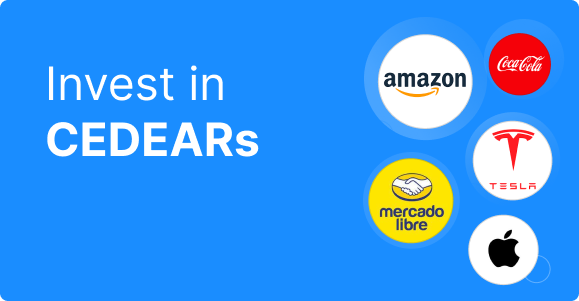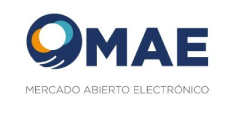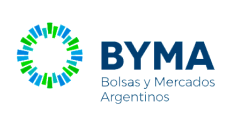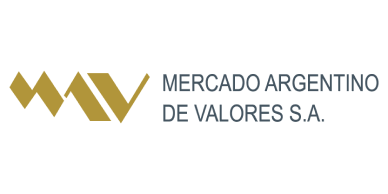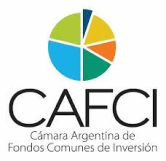Five reasons why to invest in an Investment Fund (FCI)
The best asset to diversify your pesos or dollars.
Low minimum (from ARS1,000).
Multiple possibilities: there is a fund for each objective.
Fast liquidity.
Managed by a professional team.
More than 25 families of leading Investment Funds (FCI) are part of our Supermarket.
We are members of the main Managing Companies of the activity.






























How to choose an Investment Fund
Set your objective: protection, vacation, moving...
Know all your options on our platform and reports.
Choose the one that best suits you, invest in a click away, and fulfill your goals.
We help you maximize your opportunities.

There are more than 200 funds in our Supermarket, ranked according to their strategy
Which are the main Investment Funds (FCI) options?
Money Market
Corrency: Pesos
Profile: Conservative
Liquidity: 24 hours
Risk: low
Fixed-Income Securities T+1
Corrency: Pesos
Profile: Conservative
Liquidity: 24 hours
Risk: low
Objective: intend to get a rate that is equal or higher than that of a fixed-term deposit.
Investment horizon: short term.
CER Funds
Corrency: Pesos
Profile: Moderate
Liquidity: 48 hours
Risk: medium
Objective: intend to get coverage against inflation.
Investment horizon: medium term.
Dollar-linked funds
Corrency: Pesos
Profile: Moderate
Liquidity: 48 hours
Risk: medium
Fixed-Income Securities
Corrency: Pesos/Dollars
Profile: Moderate
Liquidity: 48 hours
Risk: medium
Objective: bond basket from different issuers: public, provincial and/or private.
Investment horizon: medium / long term.
Mixed-Income Securities
Corrency: Pesos/Dollars
Profile: Moderate/ Aggressive
Liquidity: 48 hours
Risk: medium/high
Objective:diversify portfolio between bonds and stocks.
Investment horizon: medium/ long term.
LATAM funds
Corrency: Dollars
Profile: Moderate
Liquidity: 48/72 hours
Risk: medium
Objective: invest mainly in assets of Mercosur countries (+Chile).
Investment horizon: medium / long term.
Variable Income
Corrency: Pesos
Profile: Aggressive
Liquidity: 48 hours
Risk: high
Objective: invest in stocks (generally, the benchmark is Merval S&P).
Investment horizon: long term.
Total return
Corrency: Pesos/Dollars
Profile: Aggressive
Liquidity: 48 hours
Risk: high
Objective: look for a definite objective, and more discretionary investment.
Investment horizon: long term.
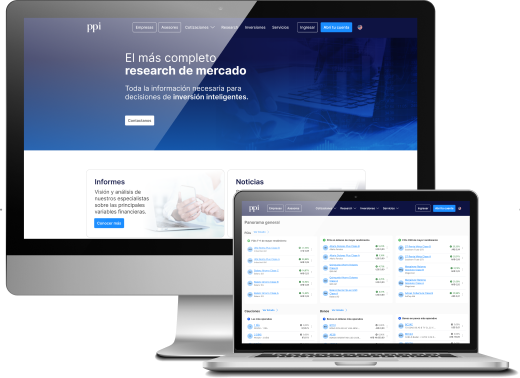
Access the most complete research of the local market Investment Fund (FCI)
Reports of the activity, and of each strategy: CER, DL, LATAM...
Monitors with profitability ranking, equity, and more...
Recommended portfolios of Investment Funds according to the investor’s objective and profile.
Educational talks, and talks with the PM of the main Companies.
Online platform to analyze and compare all the options.
Open-end Investment Funds are those whose number of outstanding shares may increase or decrease throughout their life, depending on the number of shares that are issued to meet underwriting requests or are canceled to meet redemption requests. The value of each share is calculated based on the value of the portfolio of the fund. Open-end Investment Funds are more restrictive in terms of the type of asset to be included (it is limited to financial assets, precious metals, currencies, and in the case of securities – bonds and stocks – they must be offered for public sale). These are the ones that can be traded today through PPI.
Closed-end Investment Funds are composed of a fixed maximum number of shares that are issued in the placement stage and that cannot be increased or decreased later until the dissolution of the fund or the completion of the investment plan determined in its Management Regulations (they have an expiration date). In this type of fund, the value of each share depends not only on the value of the portfolio of the fund, but also on the market price that arises from the relationship between supply and demand (secondary market). Therefore, its liquidity will depend on market conditions (there are circumstances where it is difficult to find buyers). Closed-end Investment Funds can include investments in real property and commercial developments (the set of assets must be homogeneous or similar).
Two independent entities called the Management Company and the Depository Company (or Custodian) are involved in the management of your assets. The first is the one that manages the fund assets on behalf of the investors, makes the investment decisions, places the shares and calculates their value. The Managing company also represents the interests of the shareholders, keeps the Investment Fund’s accounting, makes all the legally required publications and complies with the information requirements requested by the National Securities Commission (CNV- Comisión Nacional de Valores).
The Depositary Company, on the other hand, maintains custody of the assets that make up the fund and works as a placement agent for these instruments. Its main functions are to receive the amount of underwritings, pay investments, collect income, dividends and amortizations, pay redemptions and control the management balance sheet. In practice, most Depository Companies are also financial entities authorized by the BCRA (Banco Central de la República Argentina – Central Bank of the Argentine Republic).
In this way, investors ensure double control over the actions of the Investment Fund, since the Managing Company is responsible for carrying out transactions, and the Depositary Company, for controlling.
There are different tools that provide information about the Investment Funds (FCI). Among them, the prospectuses or factsheets. This is a document that the Investment Funds issue at least once a month, where a general description of the fund is made. We can find data such as: activity start date, classes, currency, rating, benchmark, custody, and redemption period. Also the minimum investment, the fees, the objective and evolution of returns, among other data. It is even customary to detail the composition of the portfolio and main holdings.
The Management Regulation is another tool. It is a contract originally signed by the Managing Company and by the Depository Company of the Investment Fund, to which the Investors (Shareholders) adhere by operation of law when they underwrite shares of the fund. In this sense, the Management Regulation regulates the contractual relations between the parties, and is composed, on the one hand, of Specific Clauses and, on the other hand, of General Clauses, established in the National Securities Commission’s Regulations.
Lastly, they may or may not be rated. If they are, you can publicly access the rating agency’s report. They are specialized third-party assessments that give an independent technical opinion on the capacity, the risk of redemption of the shares, the diversification and risk of the portfolio. The investment policy and compliance with the Management Regulations are also evaluated.
Regarding tax issues, these differ depending on whether they are natural persons (individuals) or legal entities (institutions). For example, individuals must pay income tax and personal assets tax on Investment Funds.
Regarding the tax treatment of the asset, we recommend going to the pages of the National Securities Commission and the entities of the Buenos Aires Stock Exchange, among others. We also suggest you should ask your accounting advisor.

